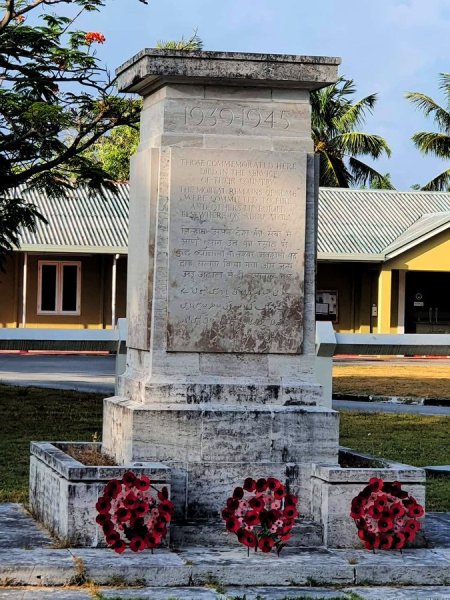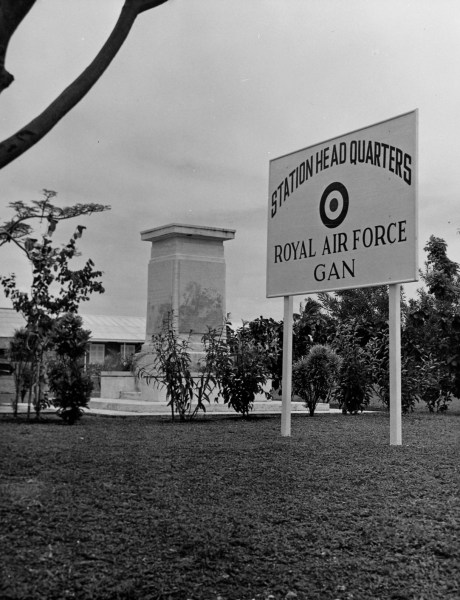Latest Comment
Post Comment
Read Comments
 External Affairs Minister S Jaishankar pays homage to the Indian soldiers commemorated at the Addu Atoll Memorial. Photo credit: DrSJaishankar/Twitter
External Affairs Minister S Jaishankar pays homage to the Indian soldiers commemorated at the Addu Atoll Memorial. Photo credit: DrSJaishankar/TwitterExternal Affairs Minister S Jaishankar on Sunday (March 27) visited a Second World War memorial on Gan Island in Addu Atoll, the southernmost atoll of the Indian Ocean archipelago. The Addu Atoll Memorial commemorates 70 personnel of the armed forces of undivided India who were killed at the RAF base on the island between 1942 and 1944.
🗞️ Subscribe Now: Get Express Premium to access the best Election reporting and analysis 🗞️
Jaishankar said the visit gave him “an opportunity to pay homage at the Addu War Memorial, where Indian soldiers and servicemen died…and their passing away reminds us how history, in many ways, connects India and the Maldives”.
Building of the British base
Records of the Maldives government indicate that Gan island was inhabited until 1941. But in the first few months of 1942, with their base at Kuantan, British Malaysia, destroyed in the war, the British chose Ceylon (modern-day Sri Lanka) to be their new main naval base in the region — with an additional base at Addu Atoll.
A register published by the Commonwealth Graves Commission in 1961 on the war dead in Sri Lanka and the Maldives recorded:
“After the loss of Singapore, additional bases in the Indian Ocean were necessary, and early in 1942 a naval base was rapidly and secretly built on Addu Atoll, and was already usable in April of that year when the first Japanese naval raid into the Indian Ocean occurred. A Royal Air Force Station also was soon established, and the island was garrisoned by units of the Indian Army, who also provided the labour units for work on the airfield and defences.
“Climatic and other conditions at first caused a very high sick rate among these men, and the remains of those who succumbed were either buried on the island or cremated.”
At the memorial, the inscription on a commemorative plaque has explanatory inscriptions in English, Hindi, and Urdu:
“Those commemorated here died in the service of their country
The mortal remains of some were committed to fire and others lie buried on Addu Atoll”
 The Second World War memorial on Gan Island, Addu Atoll in the Maldives, commemorating 70 men from undivided India who died between 1942-1944. Photo credit: Abdulla Shakeeb/Naajih Didi/Twitter
The Second World War memorial on Gan Island, Addu Atoll in the Maldives, commemorating 70 men from undivided India who died between 1942-1944. Photo credit: Abdulla Shakeeb/Naajih Didi/Twitter
Indian labour in the Maldives
In his book ‘The British Empire and the Second World War’, historian Ashley Jackson wrote that the strategic location of the Maldives had been noted since the 19th century, particularly its southern atolls that were so isolated that they would be immune from land-based air power. The British, he wrote, had their eye on the Maldives if Singapore were to fall — which eventually happened in February 1942.
In September 1941, Britain despatched two units of the Mobile Naval Base Defence Organization (MNBDO) from the Mediterranean. It sought permission from the ruler of the Maldives, Sultan Majeed Didi, only after military work had begun in Addu Atoll, Jackson wrote. Residents of the islands were forced out, and the local economy of farming, fishery, and trading was disrupted. Palms were torn down, and roads that would accommodate military vehicles were built. The villagers who had been displaced provided the labour, and “cigarettes and beer — religious taboos — entered the islands’ exchange networks”, Jackson wrote.
But the British struggled in the face of the “climate, malaria, remoteness, poor mail service from Britain via India and Ceylon”, and the physical labour required to establish a military facility from scratch. In December 1941, the soldiers at Addu Atoll sent for Indians to complete building the base.
By the end of December 1941, 642 Indians arrived in Addu Atoll and were put to work to build an aerodrome with three runways that would be used by the air force, Jackson wrote. The aerodrome led to further displacement of the Gan islanders. In February 1943, a Walrus seaplane from the cruiser HMS Gambia became the first aircraft to land on Gan.
Not many details were initially available on the role Indian personnel played in the Maldives, but it is likely they were not restricted to just building the base, and were engaged in active duty as well.
The memorial to war dead
In October 1960, the Commonwealth War Graves Commission approved the design and construction of a memorial to the fallen soldiers. It was completed in 1963, and installed in the lawn in front of the administrative building of what was the British airbase at Gan.
 An undated photograph of a signboard identifying the station headquarters of the Royal Air Force in Gan, Addu Atoll, Maldives. Photo credit: Andrew Fetherston/Twitter
An undated photograph of a signboard identifying the station headquarters of the Royal Air Force in Gan, Addu Atoll, Maldives. Photo credit: Andrew Fetherston/Twitter
According to the register published by the Commonwealth Graves Commission, 70 Indians are commemorated at the war memorial. The Indian soldiers who died in the Maldives belonged to the Royal Regiment of Indian Artillery, Corps of Royal Indian Engineers, Royal Bombay Sappers and Miners, Indian Signal Corps, 5th Maratha Light Infantry, 13th Frontier Force Rifles, 15th Punjab Regiment, Royal Indian Army Service Corps, Indian Hospital Corps, Indian Army Ordnance Corps, Indian Army Medical Corps, Corps of Indian Electrical and Mechanical Engineers, Indian Army Corps of Clerks, Indian General Service Corps and the Naval Auxiliary Personnel.
The minutes of the 405th meeting of the Commonwealth War Graves Commission of July 1957 read: “The Chairman said that owing to the development of the airfield on Gan Island Addu Atoll, in the Maldive Islands, it would not be possible to erect satisfactory permanent headstones on the graves there, and it was proposed that a Memorial be erected on a site on Gan Island yet to be selected to commemorate both the men who were buried there and those whose remains had been cremated on the island.”
Records indicate that the war dead were buried in four cemeteries on the island, and that it was difficult for Britain to ascertain and identify the remains. It was during this meeting that the Commonwealth War Graves Commission decided to erect this memorial in commemoration of the personnel of the armed forces of undivided India.


